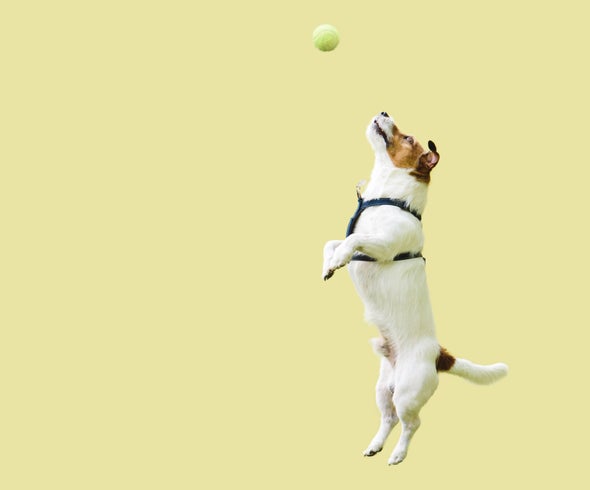This is Scientific American's 60-second Science, I'm Christopher Intagliata.
You know how in the Road Runner cartoons, whenever something drops—like Wile E. Coyote falling off a cliff—it makes this sound?
(CLIP: Cartoon dropping sound)
"And obviously, if you hear that sound, you assume that something is falling down rather than going up, and this is something we as humans do automatically."
Anna Korzeniowska is an animal behavior scientist at the University of Sussex in the U.K. And she wanted to see whether dogs might also associate falling objects with falling sounds.
"But obviously, we can't ask them."
So instead she recruited 101 canines—not all dalmatians, if you're wondering. And she had the dogs watch a short video sequence, in the lab, of a blue ball rising and falling on the screen. The video was accompanied by either a corresponding rising and falling tone....
(CLIP: Rising and falling sound)
... or the opposite, more counterintuitive pairing of the ball falling with a tone that was rising.

After running these tests, the researchers analyzed video of the dogs. They coded each frame using a program called Gamebreaker, which is usually used to analyze sports footage.
And the researchers found that while the dogs spent equal amounts of time looking at both video sequences, they spent a larger proportion of that time tracing the movement of the ball with their heads when the direction of the ball and the sound aligned—perhaps suggesting that they were more engaged when sight seemed to match sound. The results are in the journal Biology Letters.
And although we can't truly know what the dogs were thinking—or whether this behavior really means they find corresponding tones and motion more captivating—it might nevertheless be something for us humans to ponder as we play fetch with Fido.
Thanks for listening for Scientific American's 60-second Science. I'm Christopher Intagliata.













